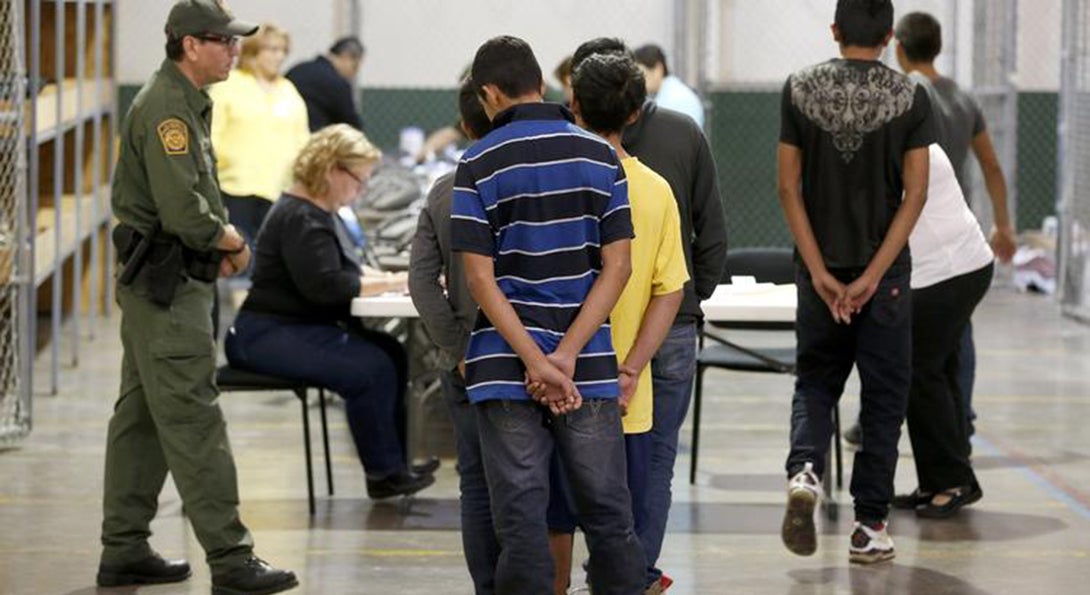Undocumented Children Detained & Literacy Needs

In 2010, approximately 5,000 undocumented children, unaccompanied by parents, passed over U.S. borders, primarily from Latin American nations. By the end of 2015, that number figures to hit 90,000. U.S. Customs and Border Protection reports 21,403 of these children apprehended from the period of October 1, 2013 to September 30, 2014.
What happens to these youngsters when they enter the immigration courts system? College of Education alumna Alexis Cullerton, PhD Literacy, Language and Culture ’14, set out to examine that question from a literacy perspective during her tenure as a research specialist at the UIC Center for Literacy. Her study, “Literacy and Undocumented Immigrant Youth in a Federal Detainment Center: Working Toward a Better Future,” details the language pitfalls facing non-English speakers as they attempt to navigate the U.S. federal justice system.
“Their needs are quite different than a voluntary immigrant,” Cullerton said. “These are kids who are taking care of themselves who are required to meet with lawyers in really high-stakes situations in which they have to rely on literacy.”
Cullerton’s research examined the literacy practices of these children, how they interact with literacy and the contextual demands of literacy expectations facing the youngsters. She found an extremely challenging situation.
For some undocumented children, literacy skills can mean the difference between life and death. Some children flee their home country because their parents were murdered. Because of the language gap, many of them are not able to effectively communicate the risks they face returning to their home country and are ultimately deported. Further, the U.S. does not have repatriation laws, meaning children are sent across the border with no resources to resettle or assure their personal safety.
Cullerton found vocabulary usage was inconsistent throughout detention centers. Staff would refer to legal counsel as lawyers, and then others would use the term paralegal, or the term legal representative. Non-English speaking youth in detention end up meeting with their lawyer without knowing they are heading into a meeting with their lawyer. Further, youth often are not aware that anything they communicate to their lawyer becomes legally binding. Written documents for immigration cases are composed at a grade 17 writing level, rendering them inaccessible to children, let alone non-English speakers.
“Something as simple as not taking the time to explain vocabulary to these children has profound implications on their futures,” Cullerton said. “It’s the difference between deportation and staying in the country.”
From her research, Cullerton generated a list of recommendations to improve literacy access in detention centers. At a base level, she says documents need to be made accessible in an age and language-appropriate manner. Second, she says a map or itinerary with consistent labels and terms would help children better navigate their legal meetings. Kids need preparation for meeting with a lawyer—Cullerton says children are often pulled from classes at the detention center with no notice. She calls for extra support services because detained children have no primary caretaker; an adult figure can ensure youth follow up on their cases and don’t miss court dates. Something as simple as missing a court date is an automatic ticket for deportation.
Cullerton says future research would follow youth who stay in America to chart their transition out of detention centers into regular schools, community centers or group homes.
“Barack Obama called this group of unaccompanied youth an urgent humanitarian situation within the last six months, and this time last year he didn’t even know who these kids were, so things are moving,” Cullerton said. “But we need more exposure; if people get to know the children we are talking about, they will be more willing to support these efforts.”